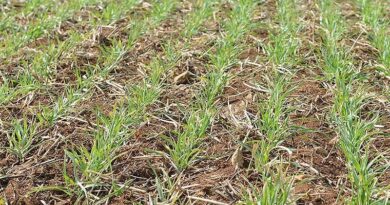5 Ways For Canadian Farmers to Delay Herbicide Weed Resistance
20 March 2023, US: Weeds are a threat to every farming operation and the number of herbicide-resistant weeds continues to grow every year. Creating a strategy to delay the development of resistant weeds is important and should be prioritized on every farm.
As of April 2022, the U.S. has 127 unique herbicide resistant weeds and Canada has 52.¹
There are a number of ways a grower can take a proactive approach to ensure a weed resistance management strategy is implemented on every acre.
Let’s get into the weeds with the five ways to delay the development of herbicide resistant weeds:
1. Tank Mixing & Multiple Modes of Action
Whenever possible, it’s important to prioritize tank mixing multiple herbicide groups to enhance weed control and mitigate the development of herbicide resistant weeds.
A pre-seed application is a great opportunity to include multiple modes of action from different herbicide groups that target the same weeds.²
Maxunitech Carfentrazone-Ethyl 240 EC (group 14) and Bromoxinyl-240 EC (group 6) are both excellent herbicide options that tank mix well with Smoke® 540 Glyphosate pre-seed for most crops.
2. Crop Rotation
Diversifying your crop rotation will optimize fertility, and mitigate disease and pest infestation. As well, this will provide you with the opportunity to utilize different selective chemistries for your crops.
Consider rotating crops with different seeding and harvest windows to target weeds at optimal points throughout the growing season. Implementing both a diverse crop and chemistry rotation helps to prevent weeds from maturing, setting seed, and becoming a challenge the following year.
[Powered by FBN members, the 2022 Canada Plantings Report provides one of the first major survey-based estimates of Canadian farmers’ planting intentions for the year. Click here to download the free report.]
3. Chemistry Rotation Throughout the Season
It’s a good strategy to use different herbicide groups at different points in the season that target the same weed spectrum.
As part of an integrated weed management program, tank mixing products from multiple herbicide groups with every application and focusing on diversifying the annual chemistry rotation is recommended.
[Curious about the shelf life of your ag chemicals? Review our ag chemical shelf life reference list and learn three tips for extending your chemicals’ efficacy on FBN’s blog.]
4. Effective Herbicide Application
Keeping clean fields year over year helps reduce the opportunity for herbicide resistant weeds to develop, set seed, and propagate.
When using products, it’s recommended to always use the label rate and directions to help you best achieve clean fields and minimize weed growth. Utilizing best practices regarding boom height, water volume, wind speed, and sprayer speed increase your chances of eliminating herbicide resistant weeds.
Also Read: Tendovo soybean herbicide from Syngenta earns rave reviews during first season of use
(For Latest Agriculture News & Updates, follow Krishak Jagat on Google News)















